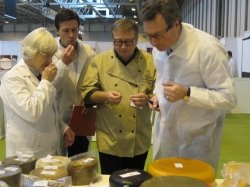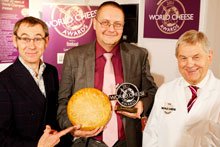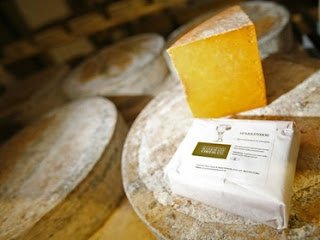 |
| 'It's, err, really, like, creamy' |
Apart from proving that
it is physically possible to eat your own body weight in cheese, the
other interesting thing to come out of the World Cheese Awards earlier this month was
the different words people use to describe cheese.
Chomping your way
through 40-plus cheeses in a few hours was the easy bit in
many ways (apples, water and elasticated trousers are the secret).
What was really tricky was deciding what was good and bad about each one in terms of flavour and texture, and expressing it clearly and
accurately.
It was interesting that
on our judging team of four people (including me) certain words kept
cropping up. 'Clean', 'grassy', 'caramel' and particularly 'nutty'
were popular ways to describe flavour, while 'smooth' and 'creamy'
were used a lot for texture.
It's not surprising
really. We all naturally tend to favour some words over others and translating what's
going on in your mouth into words is tricky. But I
did feel that sometimes these stock adjectives were trotted out a bit
too quickly (by me just as much as anyone else). There was an
over-reliance on certain words because they came to us easily. They
weren't necessarily inaccurate, but weren't quite accurate enough.
The Wines & Spirit
Education Trust has put together a rather nifty list of adjectives to
describe wine, which can be useful when you're tasting and drawing a
bit of a blank. You can see it here. So I thought I'd do something similar for cheese.
Here's what I've put
together so far:
Cheese Vocab
It's only a start. I'm sure there are other much more interesting and expressive
words out there for describing cheese. What are your favourites for
flavour and texture? What's missing from the list I've drawn up?
Feel free to leave
suggestions and I'll add them to the list. It will hopefully build
into quite a useful resource.





